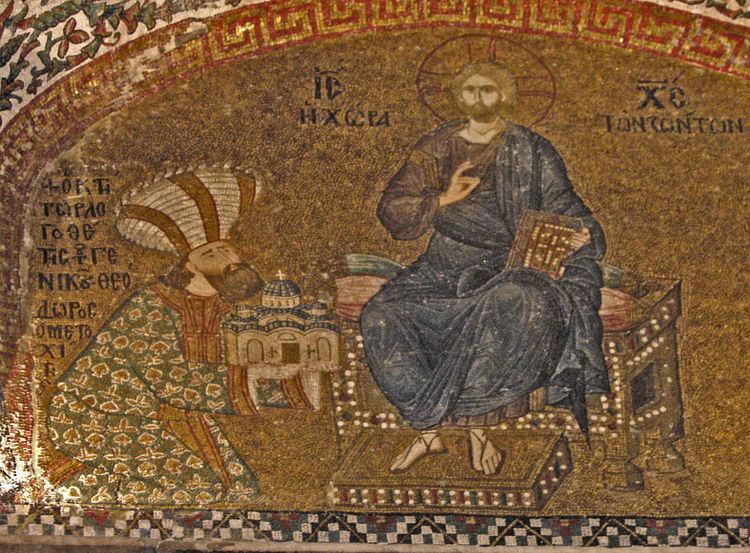 | ||
The mesazōn (Greek: μεσάζων "intermediary") was a high dignitary and official during the last centuries of the Byzantine Empire, who acted as the chief minister and principal aide of the Byzantine emperor.
Contents
History and functions
The term's origins lie in the 10th century, when senior ministers were sometimes referred to as the mesiteuontes (μεσιτεύοντες), i.e. "mediators" between the emperor and his subjects (cf. paradynasteuōn). The title first became official in the mid-11th century, when it was conferred to Constantine Leichoudes, the future Ecumenical Patriarch of Constantinople. In the Komnenian period, it was awarded to senior government officials who functioned as de facto prime ministers, such as the epi tou kanikleiou and the logothetēs tōn sekretōn, but had not yet acquired a permanent and specific function, nor the power that would characterize it in later years. Rather, it was a title bestowed on the principal imperial secretary of the moment, who acted precisely as an "intermediary" between the emperor and other officials. This reflected the shift of the Byzantine government under the Komnenoi from the old Roman-style bureaucracy to a more restricted, aristocratic ruling class, where government was exercised within the imperial household, as in feudal Western Europe.
The office of mesazōn became formally institutionalized in the Empire of Nicaea, where the holder of the mesastikion (as the function had become known), served as the Empire's chief minister, coordinating the other ministers. As the emperor and historian John Kantakouzenos (r. 1347–1354) records, the mesazōn was "needed by the emperor day and night". This arrangement was inherited by the restored Palaiologan Empire and continued in use until the Fall of Constantinople in May 1453. The office was also used in the same function in the Byzantine courts of Epirus, Morea, and Trebizond. In the latter case, it acquired the epithet megas ("great").
